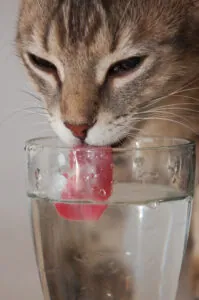
Cat drinking water from glass
Ever watched your feline friend lap up water with that cute, tiny tongue and wondered, “How much is too much?” Well, you’re not alone. It’s a question that has puzzled many a cat parent.
But fear not, because we’re here to help you decode this enigma. From understanding what’s ‘normal’ for your feline friend, to recognizing signs of excessive thirst and exploring potential causes, we’re going to shed light on it all.
So, sit back, relax, and let’s unravel the mystery together. With a dash of knowledge and a sprinkle of observation, you’ll be well on your way to becoming a hydration expert for your feline friend. And who knows? You might just discover something fascinating about your cat along the way.
Quick facts about excessive thirst in cats
- A cat’s water intake can vary based on diet, lifestyle, and health conditions.
- Increased thirst in cats can indicate medical issues like diabetes, hyperthyroidism, or kidney disease.
- Observing changes in a cat’s drinking habits and consulting a vet is crucial for their health.
Normal Water Intake for Cats: A Splash of Insight
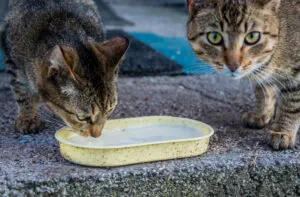
Cat drinking from water bowl
First things first, there’s no one-size-fits-all answer. Just like us humans, every cat is unique. Their water needs can vary based on a number of factors. For instance, the type of food they eat plays a significant role. Cats on a wet food diet might drink less water because, well, their food is already quite…wet!)
But what if your kitty is a dry food enthusiast? In that case, they might be hitting the water bowl a bit more often. And that’s perfectly normal. After all, they need to balance out their dry munchies with some hydration.
Now, let’s talk about lifestyle. Is your cat a couch potato or an active adventurer? If they’re always on the move, especially in warm weather, they’ll naturally need more water. On the other hand, a laid-back indoor cat might not drink as much.
So, how do you know what’s normal for your cat? The key is observation. Keep an eye on their drinking habits. If you notice a sudden change, it might be time to dig a little deeper. But remember, there’s no need to panic. Sometimes, the reason could be as simple as your cat enjoying the freshness of tap water.
In the end, understanding your cat’s water intake is all about knowing your cat. And who could be better at that than you, their loving human? So, stay curious, stay observant, and you’ll be the best cat parent you can be.
Now that we’ve dipped our toes into the pool of normal cat hydration, let’s dive deeper into the signs that might indicate your cat is drinking more than usual.
Indications of Excessive Thirst: A Purr-spective on Hydration
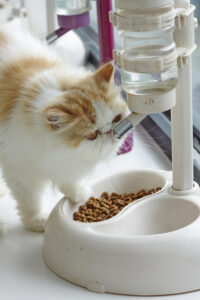
Is your cat drinking often?
Cats are creatures of habit. They have their favorite sunny spots, their preferred toys, and yes, their typical drinking patterns. But what happens when your cat starts emptying their water bowl faster than you can fill it? That’s when your feline intuition should perk up.
One of the first signs of excessive thirst is a sudden change in your cat’s water intake. Maybe you’re refilling the water bowl more often, or perhaps you’ve caught your cat making extra trips to the tap.
But it’s not just about the frequency. The quantity matters too. If your cat is lapping up water like it’s going out of style, it might be a sign of something amiss.
And then there’s the litter box. Yes, we’re going there. If your cat is drinking more, they’re likely using the litter box more too. So, if you find yourself scooping more than usual, it might be time to take note.
Remember, these signs are not about creating panic, but about promoting awareness. It’s about understanding that changes in your cat’s drinking habits could be a sign of a deeper issue.
But don’t worry, we’re here to help you navigate this. So, let’s take a closer look at what might be causing your cat’s increased thirst. It’s a bit like playing detective, but with more fur and purring involved.
Potential Causes of Excessive Thirst in Cats: A Deeper Dive
When your cat starts lapping up water like it’s the last bowl on earth, it’s natural to wonder why. Let’s delve a bit deeper into the medical mysteries that might be causing your cat’s excessive thirst.
Diabetes Mellitus: A Sugar-Coated Problem
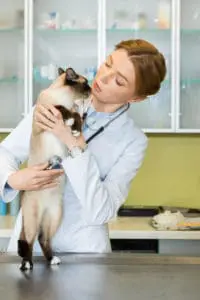
Cat check-up with Vet.
Diabetes mellitus in cats is similar to type 2 diabetes in humans. It’s a condition where the body either doesn’t produce enough insulin or doesn’t use it effectively. Insulin is crucial for helping cells absorb glucose (sugar) from the bloodstream. When this process is disrupted, excess glucose builds up in the blood, leading to high blood sugar levels. To flush out this surplus sugar, your cat’s body increases urine production, which in turn, leads to increased thirst as your cat tries to replenish lost fluids.
Hyperthyroidism: When the Thyroid Gland Overdoes It
Hyperthyroidism is a condition where the thyroid gland, a small organ in your cat’s neck, produces too much thyroid hormone. This hormone plays a key role in regulating your cat’s metabolism. When there’s too much of it, your cat’s metabolic rate skyrockets, leading to symptoms like weight loss, increased appetite, and yes, excessive thirst. The increased metabolism makes your cat feel hotter, which can lead to increased water intake.
Kidney Disease: A Tale of Two Filters
The kidneys are like your cat’s personal waste management system. They filter out toxins from the blood and create urine to remove these waste products from the body. When kidney disease strikes, these vital organs can’t do their job properly. The body tries to compensate by producing more urine to flush out toxins, which can lead to dehydration and, consequently, increased thirst as your cat tries to replace lost fluids.
Urinary Tract Disease: A Plumbing Problem
Urinary tract diseases in cats can cause discomfort and increased frequency of urination. This can lead to dehydration, prompting your cat to drink more to replenish lost fluids. Additionally, increased water intake can help dilute urine, which may alleviate some of the discomfort associated with these conditions.
Stress: More than Just a Cat-astrophe
Believe it or not, our feline friends can experience stress and anxiety, just like us. Changes in their environment, such as a new family member or a move, can cause anxiety. Some cats may drink more water as a coping mechanism, similar to how some people stress-eat.
Remember, these are potential causes, and every cat is unique. If you notice your cat drinking more than usual, it’s always a good idea to consult with your vet. They can help you get to the bottom of the mystery and ensure your cat gets the care they need.
What to Do If Your Cat Is Drinking a Lot of Water: A Guide to Feline Hydration

Keep a close eye on your cat’s water intake.
If your cat’s water intake has you raising an eyebrow, the first step is to keep a close eye on their habits. Are they drinking more frequently? Are they emptying their water bowl faster than usual? These observations can provide valuable insights into your cat’s health.
But remember, you’re not in this alone. If you notice changes in your cat’s water intake, it’s time to consult with your vet. They can help you understand what’s going on and guide you on the next steps to take.
Tackling Diabetes Mellitus: Balancing the Scales
If your vet diagnoses your cat with diabetes, they’ll likely recommend insulin therapy. This involves giving your cat insulin injections to help regulate their blood sugar levels. Dietary changes, such as a high-protein, low-carbohydrate diet, can also help manage the condition. Regular vet check-ups will be crucial to monitor your cat’s progress and adjust treatment as needed.
Managing Hyperthyroidism: Cooling the Engines
Hyperthyroidism in cats can be managed in several ways. Medication can help control the overproduction of thyroid hormone. In some cases, a vet might recommend surgery to remove the overactive thyroid gland. Another option is radioactive iodine therapy, which targets and destroys the overactive thyroid cells without harming the rest of the gland.
Addressing Kidney Disease: A Gentle Approach
While there’s no cure for kidney disease, there are ways to manage it and improve your cat’s quality of life. This might involve a special diet, medication to control symptoms, and in some cases, fluid therapy to help keep your cat hydrated. Regular vet visits will be important to monitor your cat’s kidney function and adjust treatment as necessary.
Dealing with Urinary Tract Disease: A Soothing Solution
Treatment for urinary tract diseases in cats depends on the specific condition. Antibiotics can help if an infection is present. In some cases, dietary changes or medications may be recommended to prevent the formation of urinary crystals or stones. Ensuring your cat has access to clean, fresh water at all times can also help.
Managing Stress: Creating a Purr-fect Environment
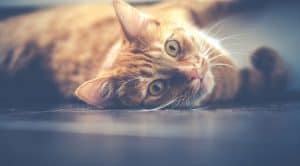
Is your cat stressed?
If stress is causing your cat to drink more, identifying and addressing the source of stress is key. This might involve making changes to your cat’s environment, providing more play and enrichment opportunities, or in some cases, using calming pheromone products. If your cat’s stress levels remain high, a vet might recommend a consultation with a veterinary behaviorist for further support.
Remember, if you notice your cat drinking more than usual, it’s always best to consult with your vet. They can provide a proper diagnosis and guide you on the best course of action.
Understanding your cat’s water drinking habits can seem like a puzzle, but with a little observation and knowledge, you can piece together the clues. At Banixx, we’re committed to helping you keep your feline friend happy and healthy. We believe that knowledge is the first step towards proactive pet care. So, whether you’re a new cat parent or a seasoned cat whisperer, we hope this guide has been a helpful resource.
But the journey doesn’t end here. For sure, we know by now that you care a lot about your cat’s health – otherwise you wouldn’t be reading this blog! That’s why we hope you’ll come back to our blog to learn more about how to keep your purr-fect, furball friend happy and healthy. If, on the other hand, you are interested in how to treat cat hot spots, or how to treat your cat’s ear infection, we cover that too. Or are you interested in more quirky items? such as why does my cat get hairballs, we’ve got that covered.
Sources
- https://www.bostonveterinary.com/web-tails/cat-drinks-lots-of-water/
- https://www.petmd.com/cat/symptoms/why-my-cat-drinking-lot-water
- https://wagwalking.com/cat/symptom/why-is-my-cat-drinking-a-lot
- https://metro-vet.com/why-is-my-cat-so-thirsty/
- https://www.dutch.com/blogs/cats/cat-drinking-a-lot-of-water
- https://www.pawtracks.com/cats/why-is-my-cat-drinking-so-much-water/
- https://www.eastshorevet.com/posts/why-does-your-cat-drink-more-water-than-us
Share this Post
Featured Post
Recent Posts
Why is my Cat peeing everywhere? all the time? All you need to Know about Feline Idiopathic Cystitis
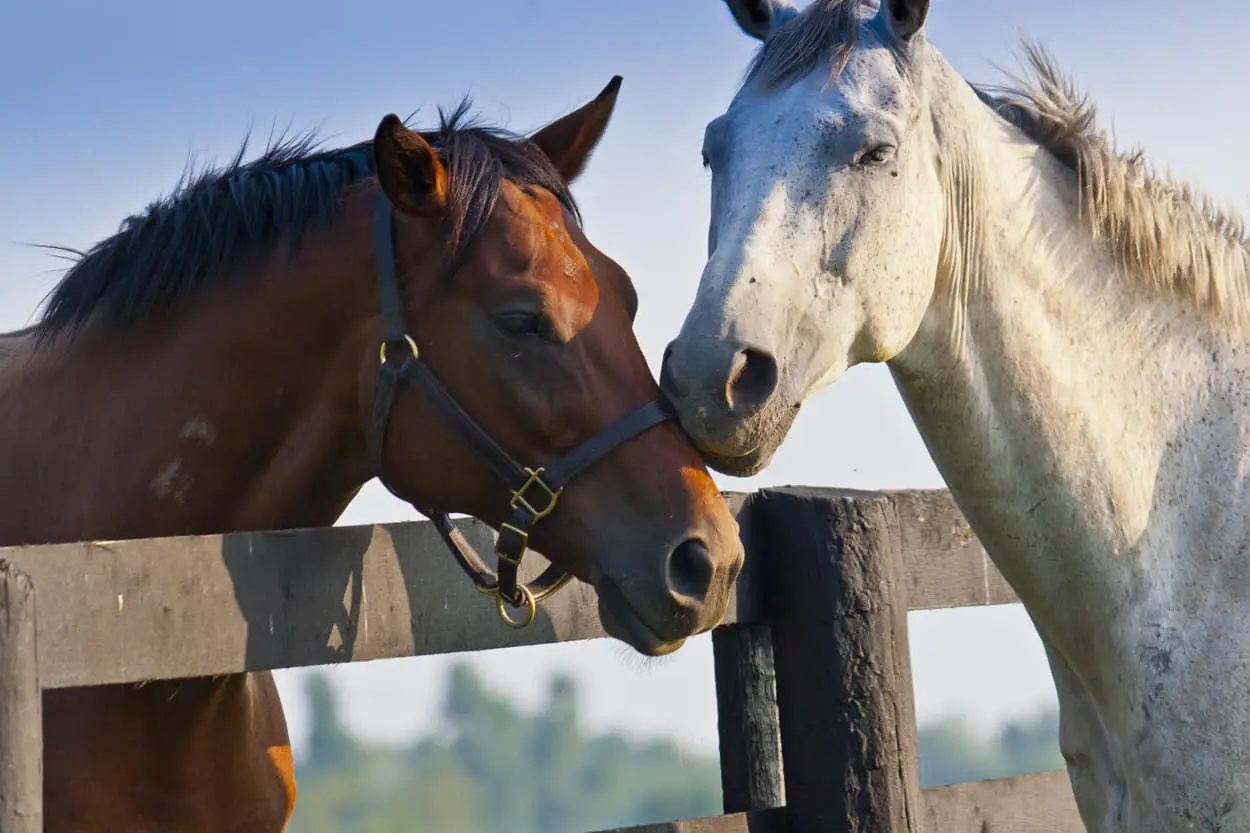
Do horse coat colors affect their behavior?
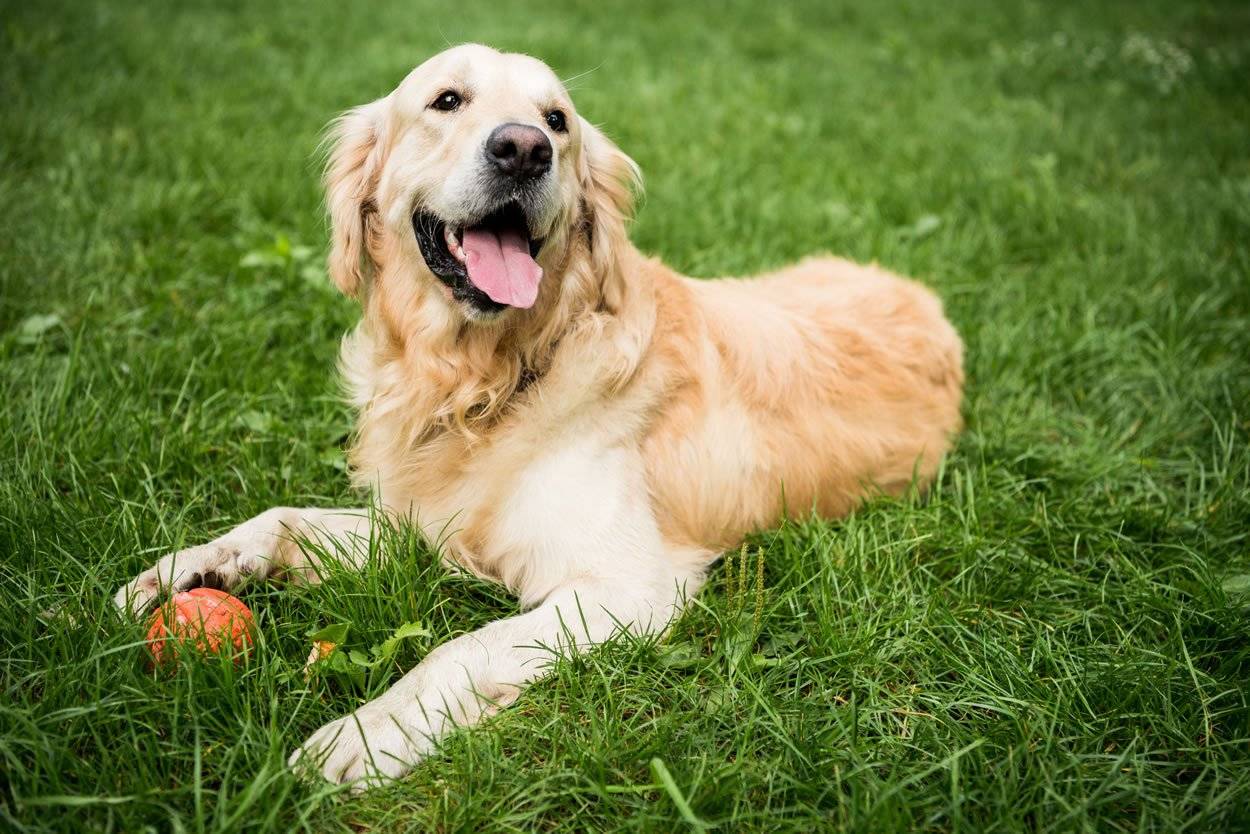
Lipomas….mysterious Lumps & Bumps on your pup…When should I worry? What should I do about them?
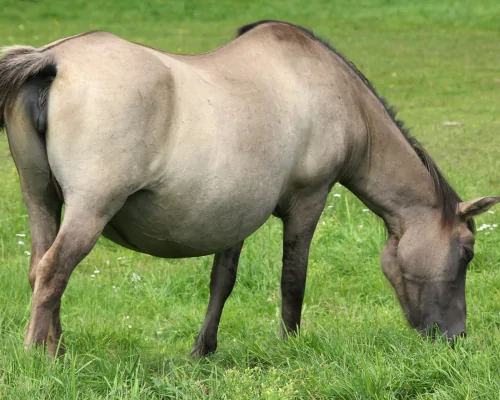
Managing the Mamas –Part 2 –The Foal development process
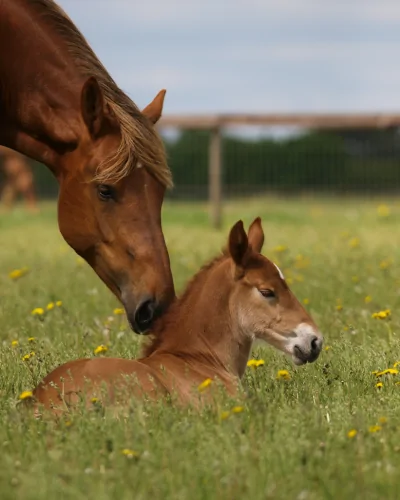
Managing the Mamas: Part 1 – Preparing to Breed Your Mare


